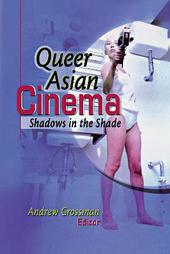
|
Queer Asian Cinema: Shadow in the Shade
Paperback
Main Details
| Title |
Queer Asian Cinema: Shadow in the Shade
|
| Authors and Contributors |
Edited by Andrew David Grossman
|
| Physical Properties |
| Format:Paperback | | Pages:372 | | Dimensions(mm): Height 216,Width 152 |
|
| ISBN/Barcode |
9781560231400
|
| Classifications | Dewey:791.43653 |
|---|
| Audience | | Tertiary Education (US: College) | | Professional & Vocational | |
|---|
| Illustrations |
illustrations
|
|
Publishing Details |
| Publisher |
Taylor & Francis Inc
|
| Imprint |
Haworth Press Inc
|
| Publication Date |
31 January 2001 |
| Publication Country |
United States
|
Description
Explore queer themes in films from Hong Kong gangster flicks to Bollywood melodramas! Although Asian films have reached a new height in popularity worldwide, Queer Asian Cinema: Shadows in the Shade is the first full-length book in English solely devoted to examining the aesthetics and politics of homosexuality in Asian films. This unique book presents multiple points of view on the portrayal of gay, lesbian, and transgendered people in film throughout Asia. From the subversive sadomasochism of Japan's "pink films" to the hard-boiled world of Hong Kong's gangster movies, Queer Asian Cinema analyzes and discusses attitudes toward homosexuality in the full spectrum of Asian film. In addition to studies of the representation of identified gay men, lesbians, and transgendered individuals, it reveals the hidden homoerotic subtext of otherwise conventional films. Queer Asian Cinema: Shadows in the Shade examines diverse aspects of Asian films, including: the political and psychological links between feudal and sadomasochist hierarchies the inevitable punishment of homoerotic bonds in gangster films the integration of the homosexual couple into the Confucian family structure in Korean films the complexities of cross-gender casting the differences between transvestism and cross-dressing the definition of male genitalia as obscene Queer Asian Cinema: Shadows in the Shade brings together experts in both film-making and movie criticism, providing a balanced viewpoint to unite the worlds of academic and popular perceptions on this subject. It opens an exciting discussion of this important and largely neglected area of cinematic discourse.
|